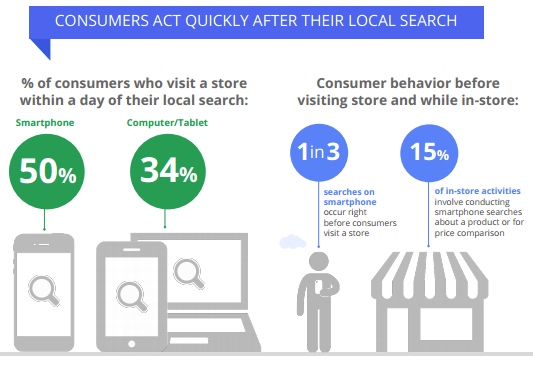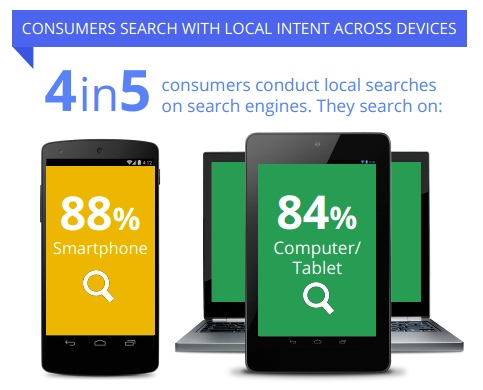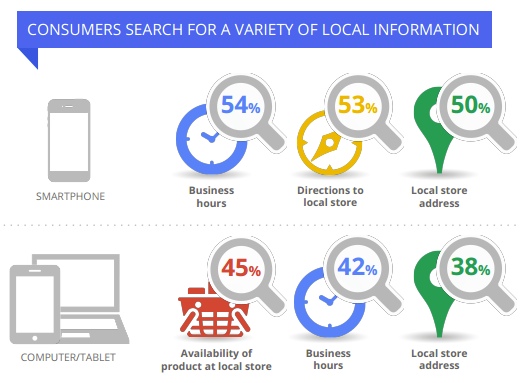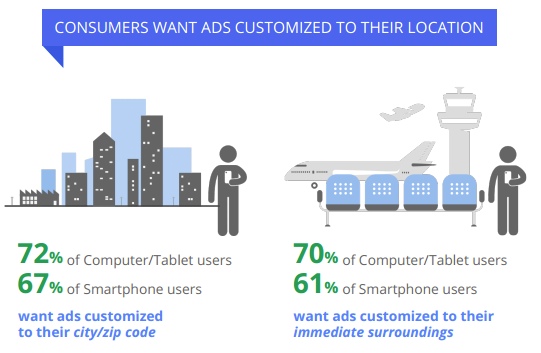
Searches with local intent are more likely to lead to store visits and sales within a day. New Google research says that 50 percent of mobile users are most likely to visit after conducting a local search, while 34 percent of consumers on tablets or computers will go to a store.
And Google says these people are ready to buy once they are in a store, as 18 percent of local searches lead to sales, compared to 7 percent for non-local searches.
Google’s new study looks at local search intent and resulting action – what information people seek when they perform a local search or are on a particular device, and how that affects their decisions and purchasing behavior.
Participants in this study voluntarily completed an online survey or logged their smartphone search and in-store activities via a mobile diary.
What Google found was that four out of five people surveyed used search engines to conduct local searches. Eighty-eight percent used smartphones and 84 percent used a computer or tablet.

These people are searching for business hours, directions to a local store, product availability, or the local store address, according to the study.

Consumers said they would buy in the store versus online if they:
- Knew they were close to a store (30 percent)
- Could get the product quickly (35 percent)
- Saw better pricing (31 percent)
And 15 percent of in-store activities involved smartphone searches about a product or price comparison.
When it comes to how users interact with local-focused pay-per-click ads, more than 60 percent in the study said they used the local information found in an ad. Of that local info:
- Seventy-three percent of smartphone users said directions were important in an ad; 78 percent of computer and tablet users said the same.
- Seventy-seven percent of computer and tablet users also said the phone number was important in an ad versus 70 percent of smartphone users.
To improve the ad experience, those surveyed said they wanted ads customized to their location. Seventy percent of computer and tablet users and 61 percent of smartphone users said they want ads customized to their immediate surroundings.

Local ads can also capture customers unexpectedly. Nineteen percent of the people studied made unplanned visits to a store and made a purchase as a result of a location-based advertisement.

In a blog post, Google gave tips for making local ads more relevant:
- Optimize for the consumer’s location. Advertisers can reach a large set of consumers by starting with a wide geographic area such as the entire U.S. and then using location bid adjustments to fine-tune bids for specific areas or ZIP codes.
- Help consumers find what they need. Make it easier for the people searching to see the information they need most. Simply adding location extensions, a phone number, or a click-to-call button right in the ad can help consumers take action faster.
- Engage consumers near your stores. You should use radius bidding to reach consumers near stores and build an attribution model for local searches.




